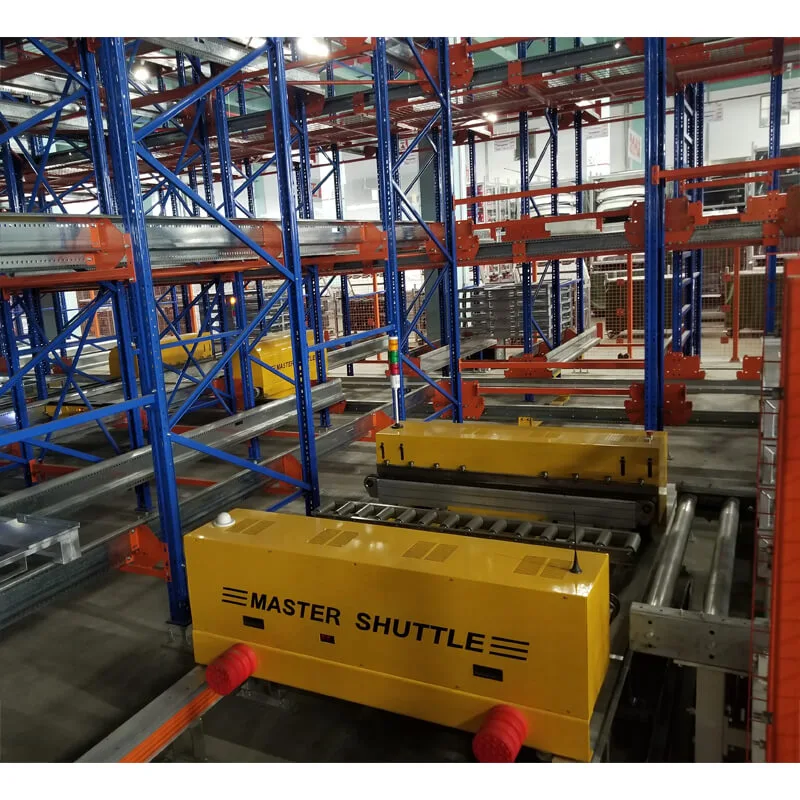Create Time: 05 ,21 ,2025
In the fast-evolving world of automation, Rail-Guided Vehicles (RGVs) have emerged as a reliable and efficient solution for material handling. These automated transport systems operate on fixed rails, ensuring precise movement of goods in manufacturing plants, warehouses, and logistics hubs.
RGVs play a crucial role in industries that demand high-speed, repeatable, and error-free transportation, such as automotive, pharmaceuticals, and e-commerce fulfillment centers. Unlike traditional conveyor systems or manually operated forklifts, RGVs offer enhanced efficiency, safety, and scalability, making them a preferred choice for modern industrial automation.
An RGV (Rail-Guided Vehicle) is an automated transport system that moves along predefined rails or tracks to transport materials within a facility. Unlike AGVs (Automated Guided Vehicles), which navigate freely using lasers or magnetic tapes, RGVs follow a fixed path, ensuring high precision and reliability.
Key Components of an RGV Vehicle:
Chassis & Frame – Provides structural support
Drive System – Motors and wheels for movement
Guidance Rails – Fixed tracks for navigation
Control Unit – PLC or software-based control
Sensors & Safety Systems – Obstacle detection, emergency stops
RGVs are ideal for environments where predictable, high-speed movement is required, such as assembly lines and large-scale warehouses.
Movement: RGVs travel along fixed rails, ensuring precise positioning.
Power Supply: Typically electric (via conductive rails or batteries).
Control Mechanism: Fully automated (controlled by PLC/WMS) or semi-automated (operator-assisted).
Rails/Guide Paths – Define the vehicle's route.
Drive System – Electric motors with speed control.
Sensors – Infrared, ultrasonic, or LiDAR for collision avoidance.
Control Unit – Integrates with Warehouse Management Systems (WMS) for real-time tracking.
Loading: Goods are placed on the RGV at a pickup station.
Transportation: The RGV moves along the rail to the destination.
Unloading: Automated or manual unloading at the target location.
Return: The RGV either waits for the next task or returns to a charging station.
Single-Track: Simple layout, best for linear movement.
Multi-Track: Allows branching and complex routing.
Heavy-Duty: For large loads (e.g., automotive assembly).
Light-Duty: For smaller, high-speed operations (e.g., pharmaceuticals).
RGVs can be tailored for specific needs, including specialized grippers, temperature control, or hybrid power systems.

High Efficiency – Faster than manual transport.
Precision & Reliability – Fixed rails eliminate deviation.
Cost Savings – Reduces labor and operational costs.
Safety – Automated obstacle detection minimizes accidents.
Scalability – Easily expandable with additional rails.
Automotive Manufacturing – Moving car parts between assembly stations.
Warehousing – Pallet and container transport.
Food & Beverage – Hygienic material handling.
Pharmaceuticals – Precise, contamination-free transport.
| Feature | RGV | AGV | Conveyor |
|---|---|---|---|
| Speed | High | Medium | Low |
| Flexibility | Medium | High | Low |
| Cost | Medium | High | Low |
| Maintenance | Low | Medium | High |
When fixed, high-speed routes are needed.
For heavy loads requiring stability.
In environments where precision is critical.
AI & IoT Integration – Smarter path optimization.
Energy-Efficient Models – Solar-powered or regenerative braking.
Expansion into New Industries – Healthcare, aerospace, and retail.
RGV systems offer a perfect blend of speed, accuracy, and cost-efficiency for industrial automation. Whether in manufacturing, warehousing, or logistics, RGVs provide a reliable and scalable solution for material handling needs.
Looking for a customized RGV solution? Contact us today to optimize your operations with cutting-edge automation!